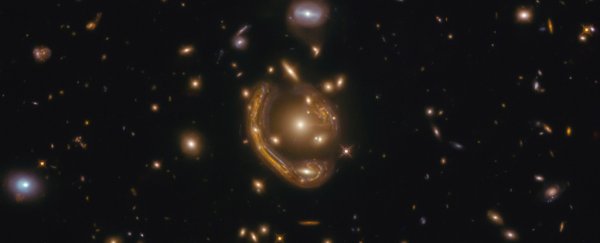A very rare astronomical phenomenon has been in the headlines a lot recently, and for good reason. It will be hundreds of years until we can see Jupiter and Saturn this close to one another again.
However, there are some even more "truly strange and very rare phenomena" that can currently be observed in our night sky.
The only problem is that in order to observe this phenomenon, you'll need access to Hubble.
As always, Hubble provides an absolutely breathtaking picture. This particular one depicts a gravitational lensing effect that gives an almost perfect example of an Einstein Ring.
The image of this ring, called GAL-CLUS-022058s, or, in an enlightened bit of astronomical branding, the "Molten Ring", was released on December 14.
That branding idea came partially from the physical appearance of the object, which indeed looks like a molten metal ring.
But it also came from the location of the object itself. Located in the southern constellation Fornax (the Furnace), the image depicts an extremely far away galaxy whose light is bent by a much closer galaxy cluster.
One of the advantages of this lensing effect is that it actually allows scientists to better study the farther away galaxy, which might have been completely invisible otherwise.
 The 'cosmic horseshoe' is another example of an Einstein Ring. (ESA/Hubble & NASA)
The 'cosmic horseshoe' is another example of an Einstein Ring. (ESA/Hubble & NASA)
While this is not the only known example of the phenomenon happening, it is one of the most striking.
But there's still lots more to potentially find, which Hubble will continue to do, no matter how our Solar System's planets align.
This article was originally published by Universe Today. Read the original article.
